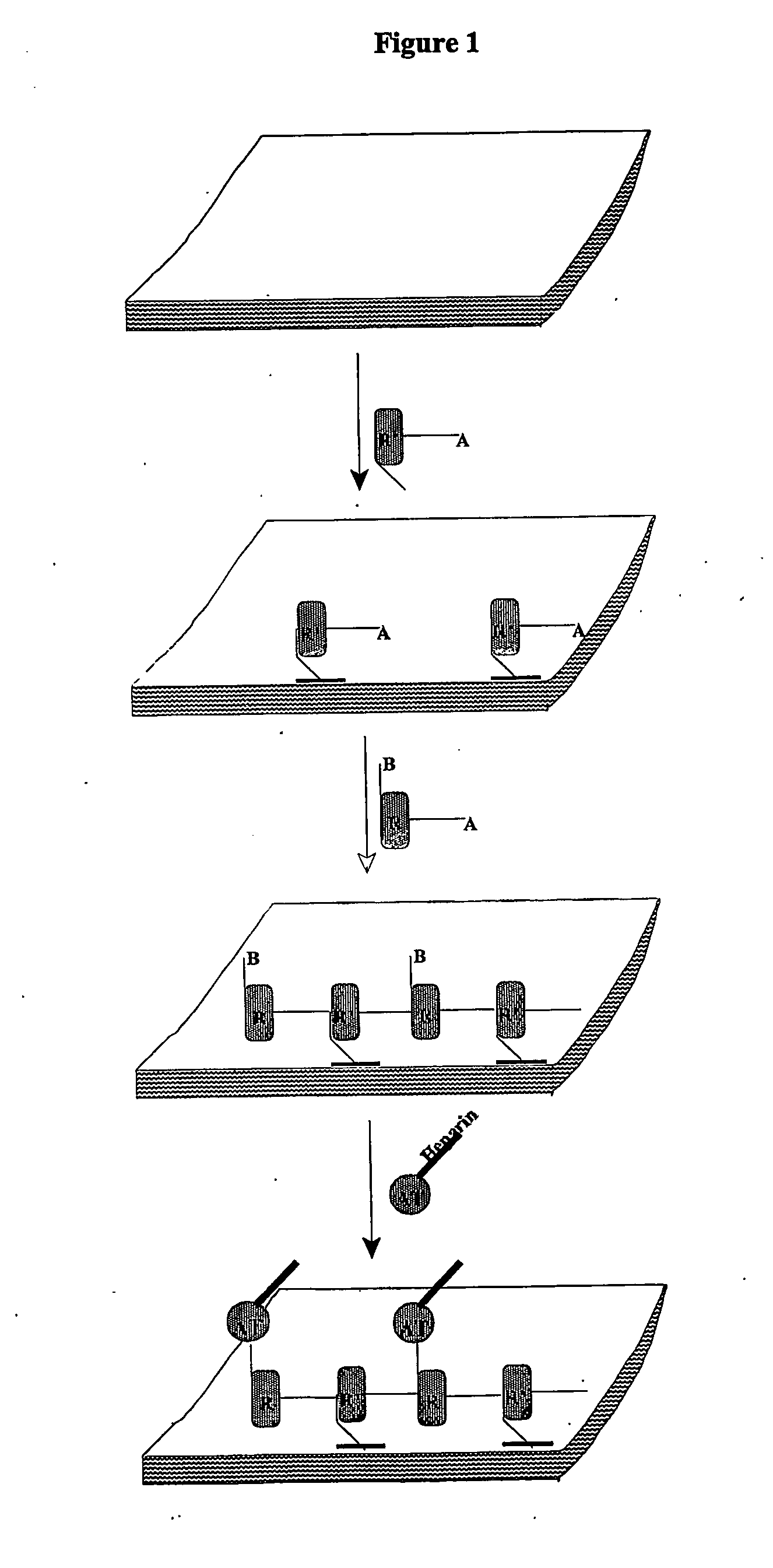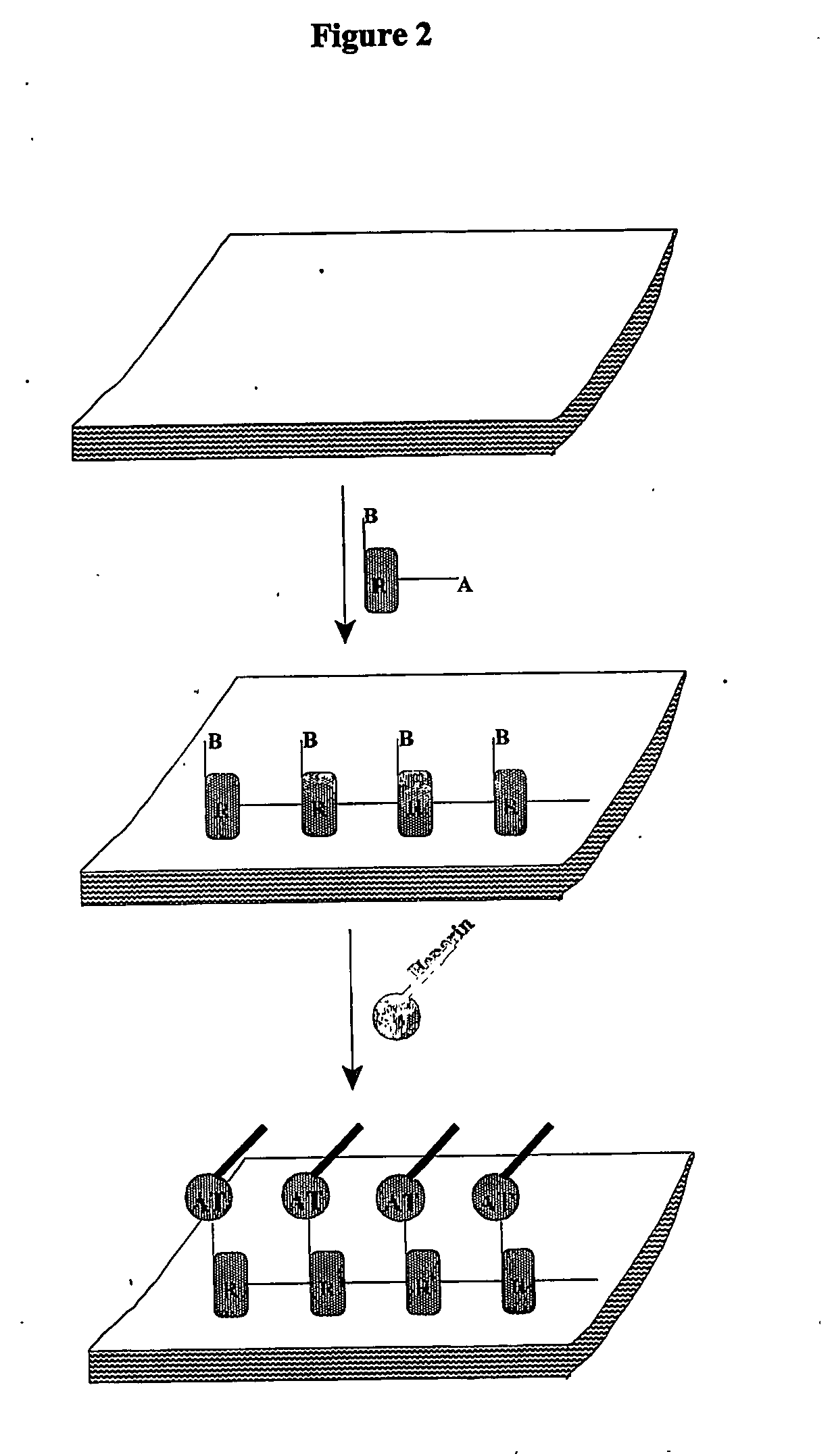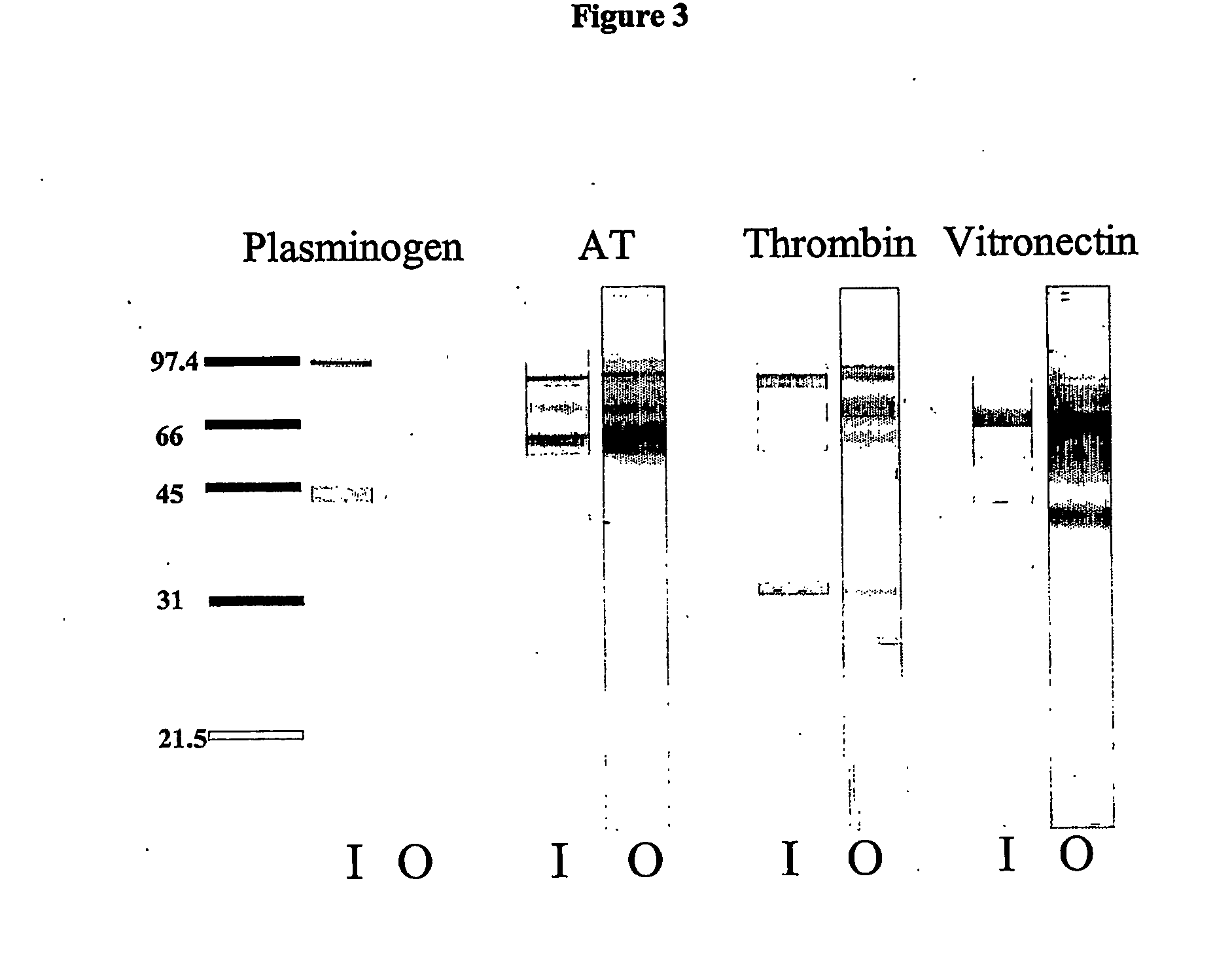Coating composition for polymeric surfaces comprising serpin or serpin derivatives
a technology of polymeric surfaces and coating compositions, applied in the direction of impression caps, prostheses, antithrombotic treatment, etc., can solve the problems of pulmonary embolism, clotting in a device can be very serious, and clotting is a clinical issue, so as to prevent or inhibit thrombosis and reduce clotting
- Summary
- Abstract
- Description
- Claims
- Application Information
AI Technical Summary
Benefits of technology
Problems solved by technology
Method used
Image
Examples
example 1
Preparation of ATH
[0139] ATH was prepared using the method described in Chan et al, Journal of Biological Chemistry 272:22111-22117, 1997. In general, antithrombin and heparin in pH, 7.3 phosphate buffered saline (PBS) are mixed and incubated at 40° C. for 13 days. Sodium cyanoborohydride is added at the end of this incubation to ensure the covalent stability of any Shiff base that has not undergone an Amidori rearrangement. ATH and unreacted AT are then bound to a butyl hydrophobic interaction column to allow removal of unreacted heparin. After suitable high salt washes, the ATH and AT are released and bound to a DEAE anion exchange column. Unreacted AT is eluted with a low salt wash, while pure ATH is released with a high salt wash. The final product is dialyzed, concentrated, “sterilized” (when required), analysed for AT content, heparin content, ATH activity, formulated, and then aliquoted.
example 2
ATH-Sparing Coating of Polyurethane Devices Using a Basecoat
[0140] This example describes the procedure for coating ATH (antithrombin-heparin covalent complex) on polyurethane catheters via a basecoat that is attached to the polyurethane (FIG. 1). An improved chemistry is used that allows reuse of unbound coating ATH stock. The ATH and basecoat are linked to each other to form an ATH single-layer through a covalent linkage. This coating is considerably less expensive, inherently more uniform, more easily controlled, and the AT linker has greater exposure to blood.
[0141] Polyurethane catheters are dip-coated in isocyanato-ethylmethacrylate, reacted with the coating at 60° C. for 20 minutes, and then dip-coated in allyl glycidyl ether (epoxide) and the free radical initiator AIBN. Free radical polymerization to form the cross-linked basecoat occurs when the catheters are heated at 80° C. for 2 hours. This is followed by an annealing step carried out by lowering the temperature to 5...
example 3
ATH Sparing Non-Covalent Coating of Polyurethane Devices
[0144] ATH (antithrombin-heparin covalent complex) may be coated on polyurethane catheters via a non-covalently attached basecoat sheath using a chemistry that allows reuse of unbound coating ATH stock (FIG. 2). The ATH and sheath are covalently linked to each other as ATH (single-layer) on a basecoat (cross-linked complex). This coating is considerably less expensive, inherently more uniform, more easily controlled, and the AT linker has greater exposure to blood.
[0145] Polyurethane catheters are dip-coated in a mixture of glycidyl methacrylate, polyethylene glycol diacrylate, and the free radical initiator AIBN in acetone. The coating is dried in place and polymerized into a cross-linked basecoat by heating at 80° C. for 40 minutes, followed by cooling to 50° C. over 20 minutes. The catheters are then immersed and incubated in a solution of ATH at room temperature for 20 hours to generate the covalent (epoxide-primary amin...
PUM
| Property | Measurement | Unit |
|---|---|---|
| molecular weight | aaaaa | aaaaa |
| molecular weight | aaaaa | aaaaa |
| degree of polymerization | aaaaa | aaaaa |
Abstract
Description
Claims
Application Information
 Login to View More
Login to View More - R&D
- Intellectual Property
- Life Sciences
- Materials
- Tech Scout
- Unparalleled Data Quality
- Higher Quality Content
- 60% Fewer Hallucinations
Browse by: Latest US Patents, China's latest patents, Technical Efficacy Thesaurus, Application Domain, Technology Topic, Popular Technical Reports.
© 2025 PatSnap. All rights reserved.Legal|Privacy policy|Modern Slavery Act Transparency Statement|Sitemap|About US| Contact US: help@patsnap.com



